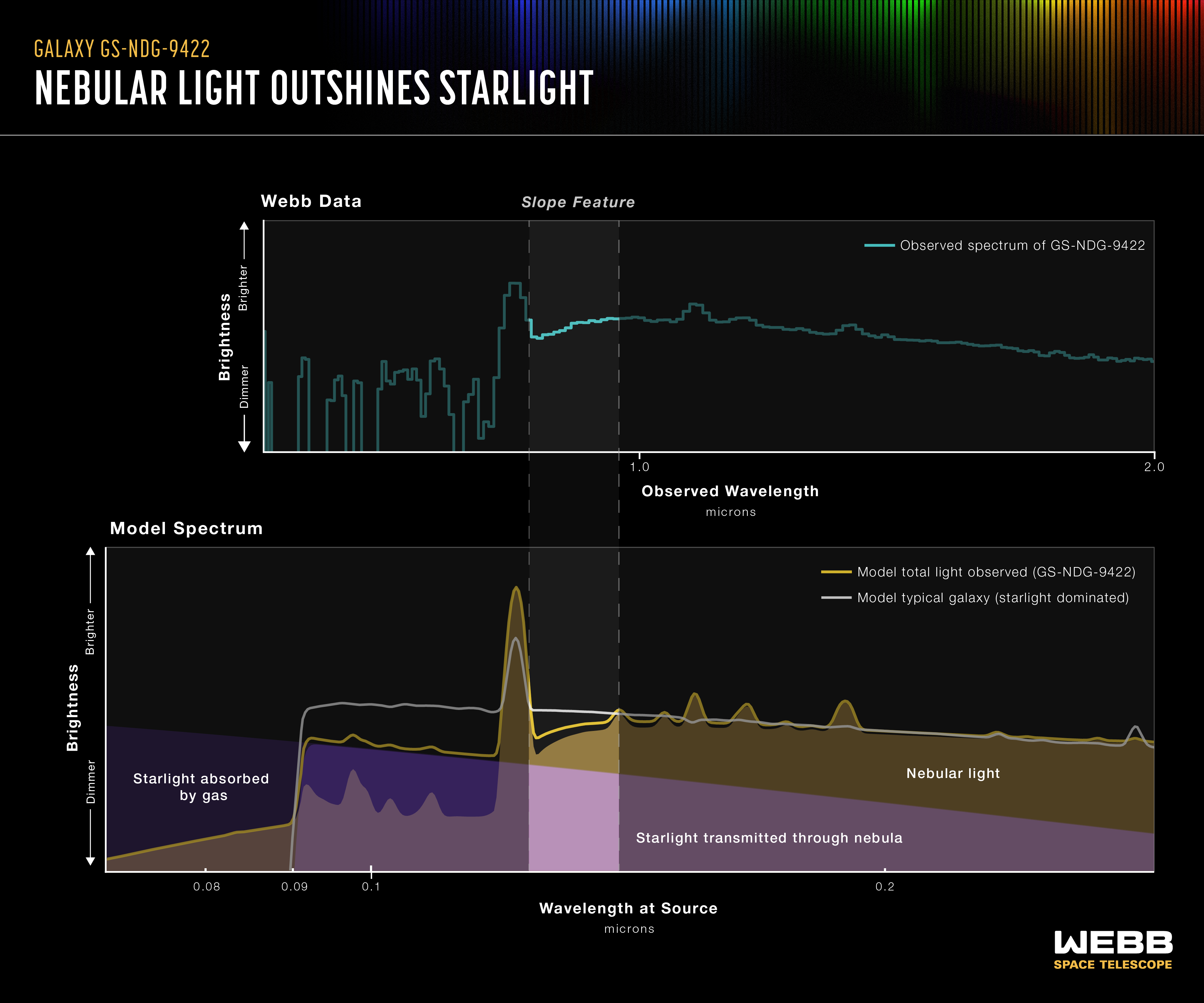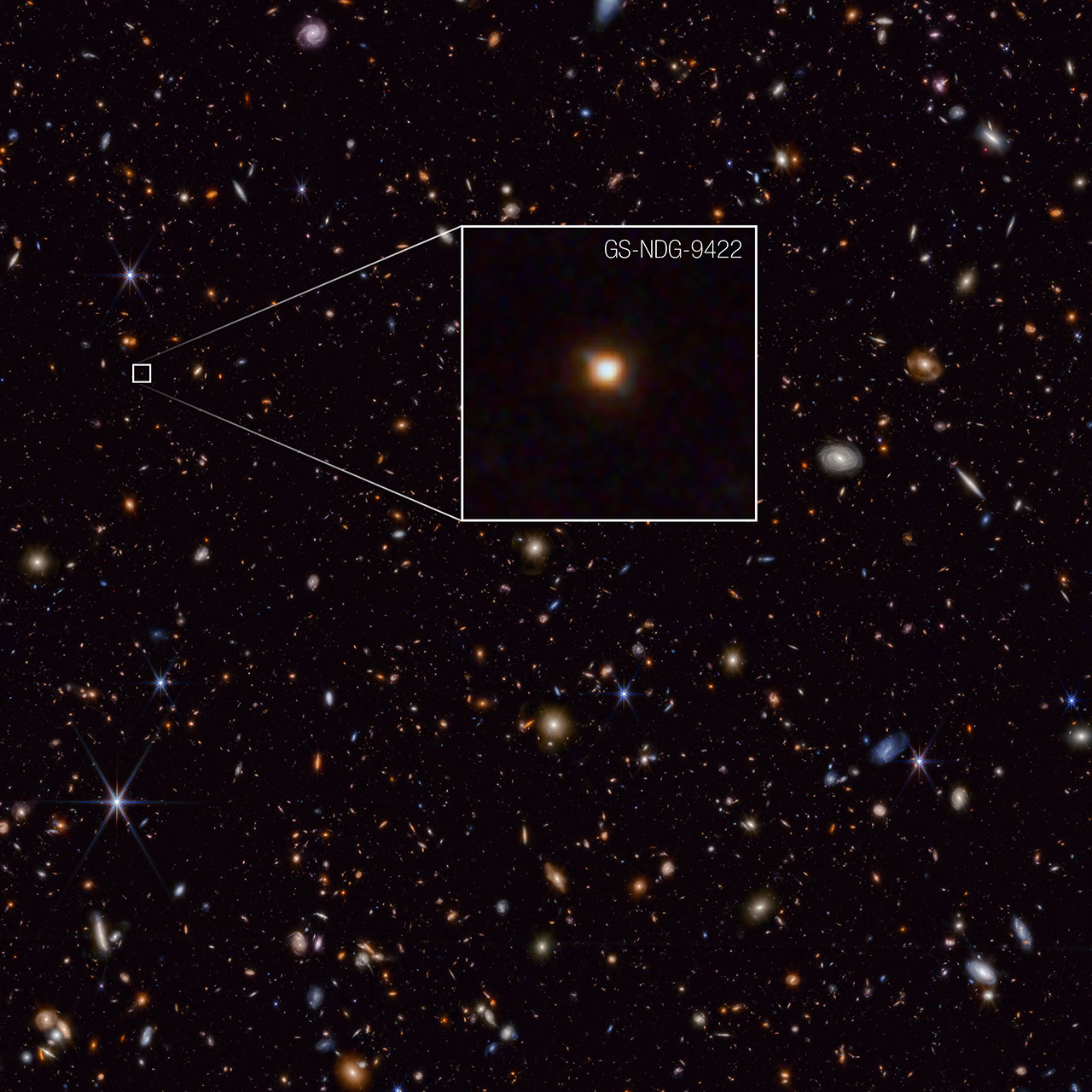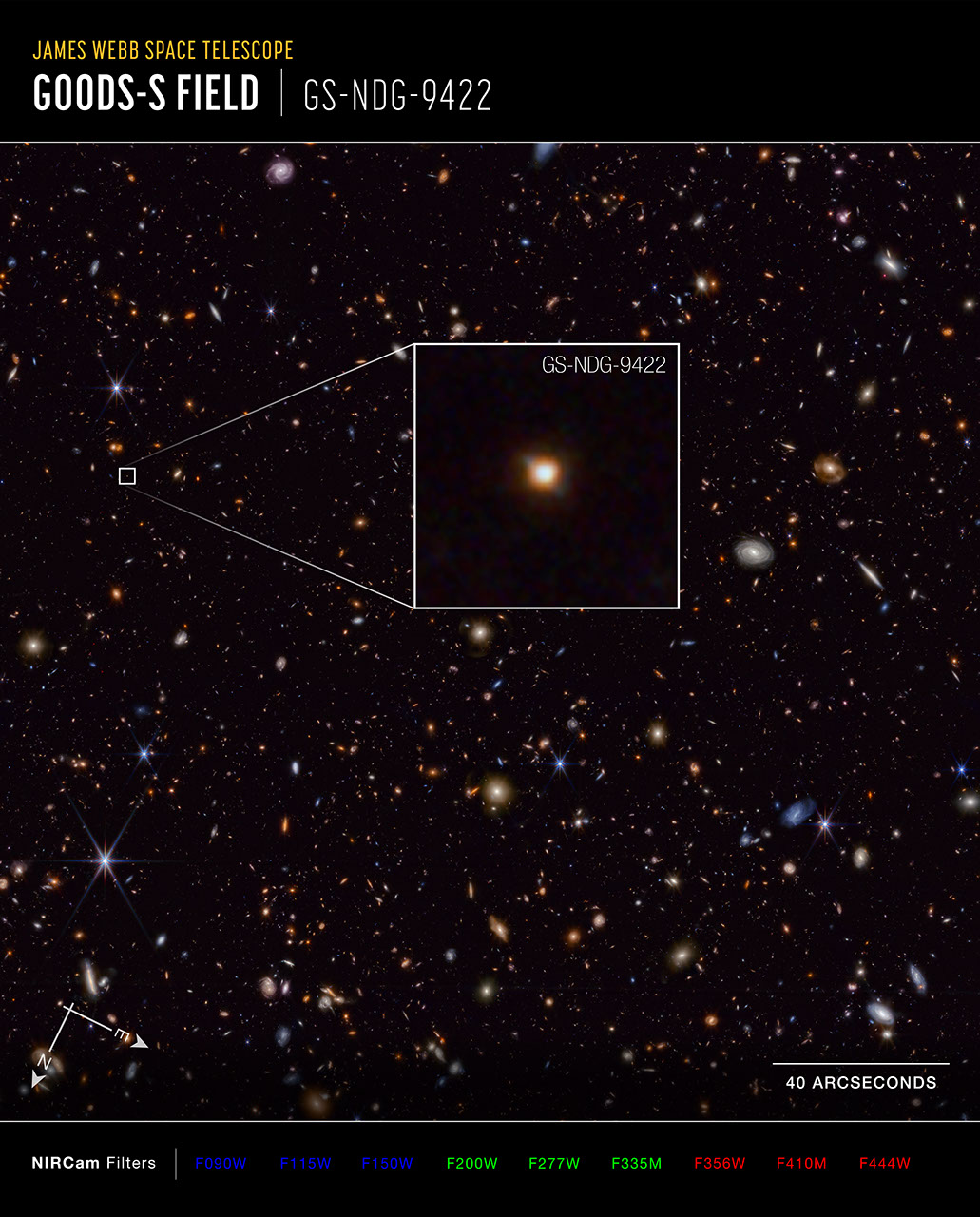1 min read
Galaxy GS-NDG-9422 Spectrum (NIRSpec)

This comparison of the data collected by the James Webb Space Telescope with a computer model prediction highlights the same sloping feature that first caught the eye of astronomer Alex Cameron, lead researcher of a new study published in Monthly Notices of the Royal Astronomical Society.
The bottom graphic compares what astronomers would expect to see in a "typical" galaxy, with its light coming predominantly from stars (white line), with a theoretical model of light coming from hot nebular gas, outshining stars (yellow line). The model comes from Cameron’s collaborator, theoretical astronomer Harley Katz, and together they realized the similarities between the model and Cameron's Webb observations of galaxy GS-NDG-9422 (top). The unusual downturn of the galaxy's spectrum, leading to an exaggerated spike in neutral hydrogen, is nearly a perfect match to Katz’s model of a spectrum dominated by super-heated gas.
While this is still only one example, Cameron, Katz, and their fellow researchers think the conclusion that galaxy GS-NDG-9422 is dominated by nebular light, rather than starlight, is their strongest jumping-off point for future investigation. They are looking for more galaxies around the same one-billion-year mark in the universe’s history, hoping to find more examples of a new type of galaxy, a missing link in the history of galactic evolution.
Extended Description and Image Alt Text
Extended Description
The top Webb Data spectrum plots a green line, labeled observed spectrum of GS-NDG-9422, on a scale of brightness noted on the left, with brighter going higher vertically, and dimmer going lower vertically.
The model spectrum on the bottom plots two lines, one yellow, labeled Model total light observed (GS-NDG-9422), and another white line labeled Model typical galaxy, starlight dominated. The brightness scale is noted on the left, as above, with brighter equaling taller and dimmer equaling shorter. In the highlighted region of the Slope Feature, the white line of a typical galaxy is fairly flat, while the Model of total light observed dips from right to left, before a large spike.
Image Alt Text
Infographic titled Galaxy GS-NDG-9422, Nebular light outshines starlight. Graphic is divided horizontally with one spectrum on top, labeled Webb Data, and one on bottom, labeled Model Spectrum. A portion of both spectrums about an inch wide is highlighted with a vertical column labeled Slope Feature. There is a clear similarity between the top and bottom graphs, thought the top has more angular lines and the bottom is smoother and rounded.
About the Object
- R.A. PositionR.A. PositionRight ascension – analogous to longitude – is one component of an object's position.03:32:36.89
- Dec. PositionDec. PositionDeclination – analogous to latitude – is one component of an object's position.-27:46:49.33
- ConstellationConstellationOne of 88 recognized regions of the celestial sphere in which the object appears.Fornax
About the Data
- InstrumentInstrumentThe science instrument used to produce the data.NIRSpec
- Object NameObject NameA name or catalog number that astronomers use to identify an astronomical object.GS-NDG-9422
- Object DescriptionObject DescriptionThe type of astronomical object.Nebular dominated galaxy
- Release DateSeptember 25, 2024
- Science ReleaseIn Odd Galaxy, NASA’s Webb Finds Potential Missing Link to First Stars
- CreditIllustration: NASA, ESA, CSA, Leah Hustak (STScI)
Related Images & Videos

Galaxy GS-NDG-9422 (NIRCam Image)
The galaxy GS-NDG-9422 may easily have gone unnoticed. However, what appears as a faint blur in this James Webb Space Telescope NIRCam (Near-Infrared Camera) image may actually be a groundbreaking discovery that points astronomers on a new path of understanding galaxy evolution...

Galaxy GS-NDG-9422 (Compass NIRCam Image)
This image of galaxy GS-NDG-9422, captured by the James Webb Space Telescope’s NIRCam (Near-Infrared Camera) instrument, is presented with compass arrows, scale bar, and color key for reference. This image shows near-infrared wavelengths of light that have been translated into...
Share
Details
Laura Betz
NASA’s Goddard Space Flight Center
Greenbelt, Maryland
laura.e.betz@nasa.gov
NASA, ESA, CSA, Leah Hustak (STScI)































